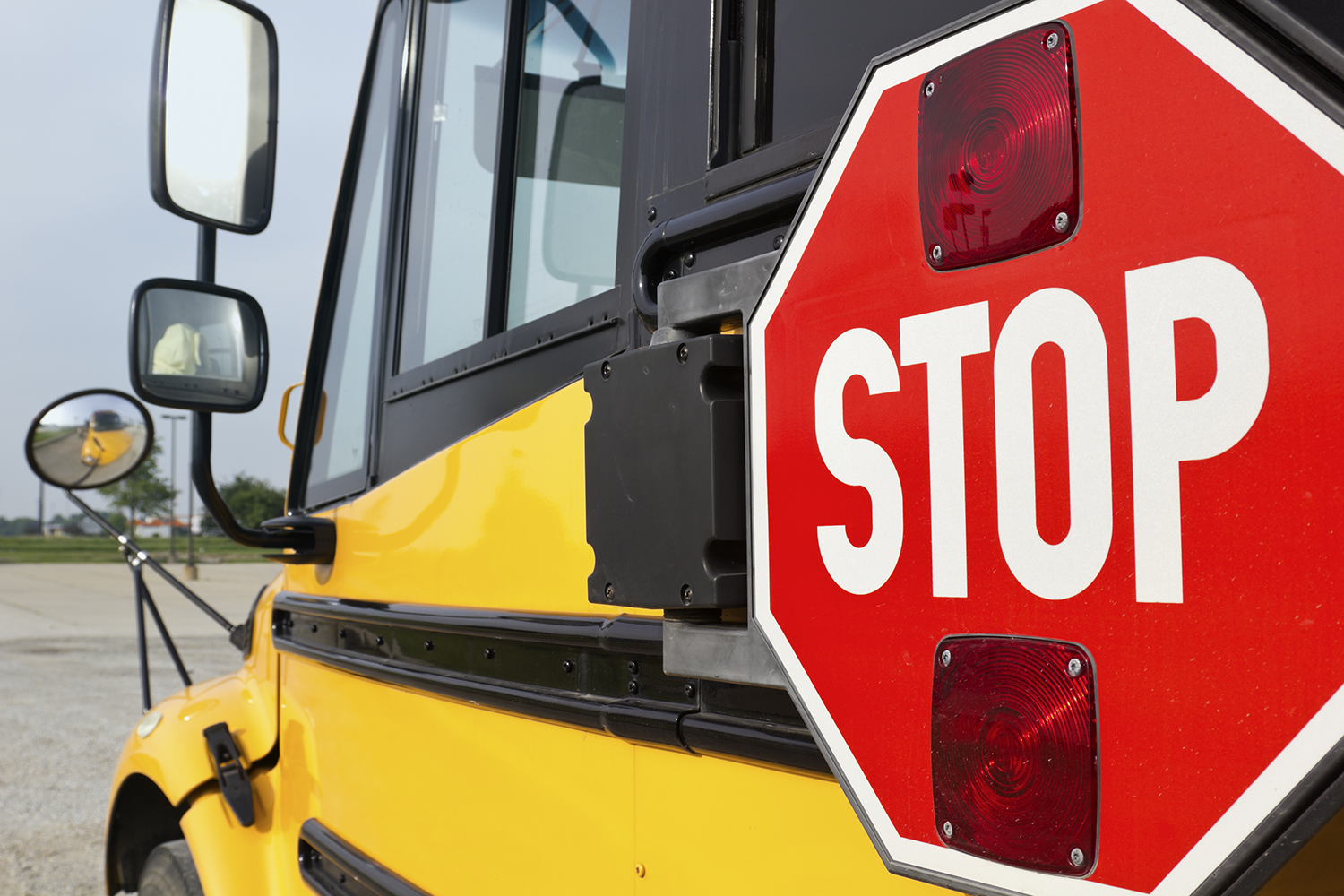Children will soon be or have already started boarding buses to head back to school. According to the State Board of Education and the Illinois State Police the most dangerous part of the school bus ride for students is the bus stop.
Children are at greatest risk when they are getting on or off the school bus. Most of the children killed in bus-related crashes are five to seven year olds getting on or off the bus when they are hit by motorists illegally passing a stopped school bus.
In neighborhoods, near schools, and at bus stops, drivers need to take special care because children do not behave like adults. Elementary school children become easily distracted and may start across the street without warning. They don’t understand the danger of moving vehicles and can’t judge vehicle speed or distance. Their view may be blocked from by the bus and they could step out into oncoming traffic. Most importantly, children expect vehicles to stop for them at the school bus stop. And, so does law enforcement.
School bus laws apply to all drivers, including those on school property, who meet or overtake a school bus that is operating all of the appropriate warning signals indicating that pupils are exiting or boarding the school bus and may be crossing the roadway.
Stop-Arm & Lights
Yellow flashing lights indicate the bus is preparing to stop to load or unload children. You should slow down and prepare to stop your vehicle.
Red flashing lights and extended stop arms indicate the bus has stopped and children are getting on or off. You must stop your car and wait until the red lights stop flashing, the extended stop-arm is withdrawn, and the bus begins moving, before you can start driving again.
Even when lights aren’t flashing, watch for children, particularly in the morning or mid-afternoon, around school arrival and dismissal times. Be alert as you back out of a driveway, or drive through a neighborhood, school zone or bus stop.
Two-Lane Roadway
When a school bus is traveling on a two-lane roadway and is stopped to pick up or drop off pupils, the vehicles in all lanes of traffic must stop. Vehicles should stop at least 20 feet before reaching the school bus to allow pupils to cross the roadway safely.
Four-Lane Roadway
When a school bus is traveling on a four-lane roadway with at least two lanes of traffic traveling in the opposite direction, only those lanes of traffic traveling in the same direction as the school bus must stop. Pupils shall not be required to cross four or more lanes of traffic to reach their residence.
One-Way Roadway
When a school bus is traveling on a one-way roadway and is stopped to pick up or drop off pupils, all lanes of traffic must stop, regardless of the number of lanes of traffic.
Death Zone
The majority of children injured or killed in pupil transportation are not injured or killed on the school bus, but outside the bus. Most of them are struck by motorists who fail to stop for the flashing red lights and extended stop arm. This area around the bus is often referred to as the “DEATH ZONE.”
Railroad Crossings
State law requires school buses to stop for all railroad crossings whether or not there are pupils on board. The school bus will display the hazard warning lights as it stops momentarily to determine if it is safe to cross.
If you are approaching the bus from the front, you may proceed past with caution. If you are approaching the bus from the rear, the law prohibits driving over the center line to pass if the bus is within 100 feet of a railroad crossing. For safety, always leave plenty of room for the bus to maneuver or back up in case of an emergency.
Vehicles should not try to cross the tracks behind the school bus until the bus has cleared the tracks and there is room for the vehicle behind the bus on the other side. Some rail crossings have limited space between rail crossings and stop signs or signals on the other side of the tracks. If the school bus must make a stop after crossing the tracks, a vehicle following the bus may be trapped on the tracks until the bus moves or the stop signal light changes. This would have tragic results should a train approach the crossing and vehicles are unable to go forward or backward to clear the tracks.
When to Proceed
Motorists may proceed after stopping for a bus if one of the following occurs:
- The bus resumes motion.
- The bus driver signals the motorist to proceed.
- Or, the flashing lights are turned off and the stop arm signal is no longer extended.
Penalties for Illegally Passing a School Bus
The penalties for illegally passing a stopped school bus are as follows:
- First offense is a mandatory minimum fine of $300 and a 3-month suspension of driver’s license.
- Second offense or a subsequent conviction within five years is a mandatory minimum fine of $1,000 and a one year suspension of driver’s license.
- Additionally, a motorist cited for illegally passing a school bus is not eligible for court supervision.
